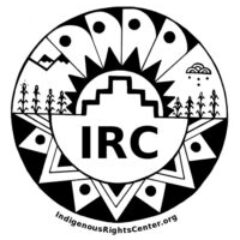The Rosetta Stone Endangered Language Program works with native language communities to create custom Rosetta Stone software for use in their language revitalization programs. Through a variety of development models designed to make Rosetta Stone software available to a wide range of indigenous groups, the Endangered Language Program promotes global linguistic diversity and embodies Rosetta Stone’s belief that language learning makes the world a better place.
Across the globe, children in countless cultures are losing the language of their parents and grandparents. As each new generation becomes ever more isolated from its past, its ancestral language slips farther out of reach—endangered and at risk of not surviving. As many as 50 to 90 percent of the world’s 6,800 languages may be extinct within this century.
Diné Bizaad (Navajo) is spoken within the Navajo Nation in Arizona, New Mexico, and Utah. Though some estimates show that Navajo is still spoken by over 100,000 persons, the decline in fluency among younger generations of tribal members is progressing at an alarming rate.
Sponsored by Navajo Language Renaissance the Navajo Rosetta Stone software is available for use in Navajo schools, homes and chapter houses.
The Endangered Language Program has worked with other Indigenous languages across North America, including:
- Kanien’kéha (Mohawk), spoken within the Kahnawake Mohawk community in Kahnawake, Quebec
- Sitimaxa (Chitimacha), spoken within the Chitimacha community of Charenton, Louisiana
- Iñupiaq (Coastal) and Iñupiaq (Kobuk/Selawik), two dialects spoken within NANA region of Alaska
- Iñupiaq (North Slope), spoken on the North Slope of Alaska
- Inuttitut, spoken within the Inuit communities of the Nunatsiavut autonomous area in Canada.
Rosetta Stone Navajo online subscriptions are available for use on mobile devices and desktop in homes, schools, libraries, and Chapter Houses across the Navajo Nation and beyond. With the Online Student Management Program, teachers of Navajo are able to plan group or individual lessons, keep track of students’ time on each exercise, record their scores and transfer their records to other folders.
Note: This software should not be thought of as a replacement for existing Navajo language programs, but rather as a supplement to help revitalize the language of the Diné. Educational studies show that the stronger a child’s command of his native language, the more quickly and proficiently he will learn and achieve in a second language. Also, proficiency in a common language strengthens the community bond between young and old.
Navajo Language Renaissance is the sole owner of Rosetta Stone Navajo. Rosetta Stone Ltd. does not sell or receive any funds from the sale of Rosetta Stone Navajo. Since Navajo Language Renaissance is a non-profit 501(c)(3) organization, all proceeds go toward the production of Navajo Language revitalization materials.
